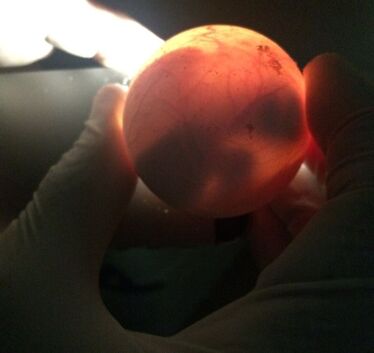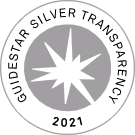2019 WINNER: Christopher Gatto
PROJECT: The role of moisture during incubation on
sea turtle hatchling dispersal ability

Project Introduction:
Incubation conditions are critical in determining multiple hatchling phenotypes and traits. Research has focussed on the effects of temperature because of the threat of climate change (Fuentes et al., 2010, Mueller et al., 2019). Warmer nest temperatures are predicted to result in female biased sex ratios (Georges et al., 1994), reduced hatching success and smaller, weaker hatchlings (Booth, 2017). However, moisture levels are also expected to vary under climate change because of changes to rainfall patterns, sea level rise and proposed nesting beach management techniques that involve watering nests to reduce nest temperatures.
Incubation conditions are critical in determining multiple hatchling phenotypes and traits. Research has focussed on the effects of temperature because of the threat of climate change (Fuentes et al., 2010, Mueller et al., 2019). Warmer nest temperatures are predicted to result in female biased sex ratios (Georges et al., 1994), reduced hatching success and smaller, weaker hatchlings (Booth, 2017). However, moisture levels are also expected to vary under climate change because of changes to rainfall patterns, sea level rise and proposed nesting beach management techniques that involve watering nests to reduce nest temperatures.
|
Yet the effect of these changes in moisture levels on embryonic development
and hatchlings traits are currently unknown. Recent research has investigated the effects of moisture on sex ratios (Lolavar and Wyneken, 2017) and hatching success (Foley et al., 2006) but moisture’s role in determining metabolic rates and locomotor performance has been ignored. Understanding how locomotor performance and metabolic rates vary is critical for our ability to predict which hatchlings and nests have a higher probability of surviving dispersal. This study will inform nesting beach managers of how climate change and potential nest interventions (nest watering) could influence population dynamics and viability. Additionally, it will help identify differences between species that influence their sensitivity to future climate change and how these differences influence their dispersal, survival and population dynamics. |
References
BOOTH, D. T. 2017. The influence of incubation temperature on sea turtle hatchling quality. Integrative Zoology.
FOLEY, A. M., PECK, S. A. & HARMAN, G. R. 2006. Effects of sand characteristics and inundation on the hatching success of loggerhead sea turtle (Caretta caretta) clutches on low-relief mangrove islands in southwest Florida. Chelonian Conservation and Biology, 5, 32-41.
FUENTES, M., HAMANN, M. & LIMPUS, C. 2010. Past, current and future thermal profiles of green turtle nesting grounds: Implications from climate change. Journal of Experimental Marine Biology and Ecology, 383, 56-64.
GEORGES, A., LIMPUS, C. & STOUTJESDIJK, R. 1994. Hatchling sex in the marine turtle Caretta caretta is determined by proportion of development at a temperature, not daily duration of exposure. Journal of Experimental Zoology, 270, 432-444.
LOLAVAR, A. & WYNEKEN, J. 2017. Experimental assessment of the effects of moisture on loggerhead sea turtle hatchling sex ratios. Zoology, 123, 64-70.
MUELLER, M. S., RUIZ-GARCÍA, N. A., GARCÍA-GASCA, A. & ABREU-GROBOIS, F. A. 2019. Best swimmers hatch from intermediate temperatures: Effect of incubation temperature on swimming performance of olive ridley sea turtle hatchlings. Journal of
Experimental Marine Biology and Ecology, 519, 151186.
BOOTH, D. T. 2017. The influence of incubation temperature on sea turtle hatchling quality. Integrative Zoology.
FOLEY, A. M., PECK, S. A. & HARMAN, G. R. 2006. Effects of sand characteristics and inundation on the hatching success of loggerhead sea turtle (Caretta caretta) clutches on low-relief mangrove islands in southwest Florida. Chelonian Conservation and Biology, 5, 32-41.
FUENTES, M., HAMANN, M. & LIMPUS, C. 2010. Past, current and future thermal profiles of green turtle nesting grounds: Implications from climate change. Journal of Experimental Marine Biology and Ecology, 383, 56-64.
GEORGES, A., LIMPUS, C. & STOUTJESDIJK, R. 1994. Hatchling sex in the marine turtle Caretta caretta is determined by proportion of development at a temperature, not daily duration of exposure. Journal of Experimental Zoology, 270, 432-444.
LOLAVAR, A. & WYNEKEN, J. 2017. Experimental assessment of the effects of moisture on loggerhead sea turtle hatchling sex ratios. Zoology, 123, 64-70.
MUELLER, M. S., RUIZ-GARCÍA, N. A., GARCÍA-GASCA, A. & ABREU-GROBOIS, F. A. 2019. Best swimmers hatch from intermediate temperatures: Effect of incubation temperature on swimming performance of olive ridley sea turtle hatchlings. Journal of
Experimental Marine Biology and Ecology, 519, 151186.
PUBLICATIONS RESULTING FROM RESEARCH
Gatto, C. R., & Reina, R. D. (2020). The ontogeny of sea turtle hatchling swimming performance. Biological Journal of the Linnean Society. doi:10.1093/biolinnean/blaa113
Gatto, C. R., & Reina, R. D. (2020). Sea turtle hatchling locomotor performance: incubation moisture effects, ontogeny and species-specific patterns. Journal of Comparative Physiology B. doi:10.1007/s00360-020-01307-z
Gatto, C. R., & Reina, R. D. (2020). Sea turtle hatchling locomotor performance: incubation moisture effects, ontogeny and species-specific patterns. Journal of Comparative Physiology B. doi:10.1007/s00360-020-01307-z



